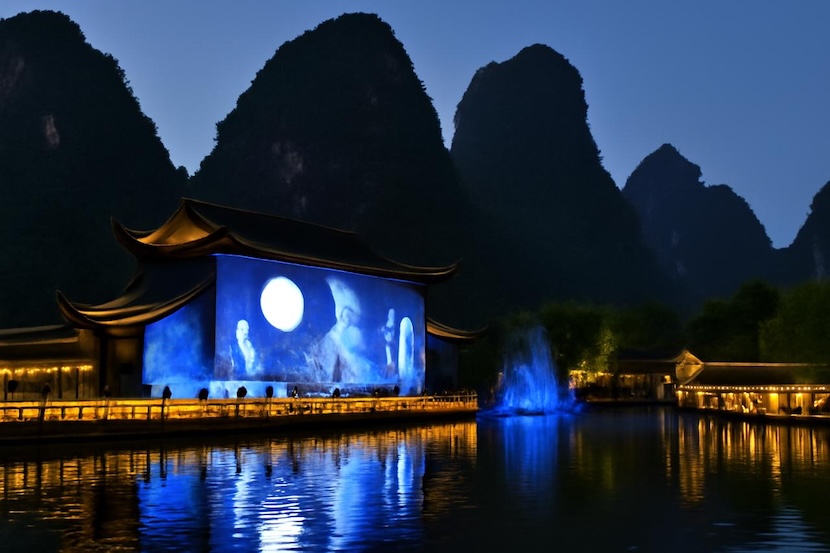Published on
November 6, 2025

In the heart of Southeast China’s Fujian Province, Nanping is rapidly emerging as a must-visit destination, thanks to its innovative use of digital technology to elevate the region’s cultural tourism sector. Recognized for its rich cultural heritage, stunning natural landscapes, and vibrant traditions, Nanping is making waves by leveraging the power of modern technology to enhance the travel experience. Let’s dive into how this exciting digital transformation is reshaping Nanping’s tourism sector.
The Rise of Nanping’s Cultural Tourism Scene
Nanping’s appeal lies in its perfect blend of natural beauty and cultural richness. Nestled within the sprawling Wuyi Mountains, the city boasts a wealth of ecological resources and cultural landmarks that attract visitors from around the world. As of 2024, Nanping saw a remarkable increase in tourism, with both the number of visitors and tourist spending rising significantly. The city’s inbound tourism grew by an impressive 102.8%, indicating a growing international interest in the region.
One of the most notable factors in Nanping’s tourism growth is its Wuyi Mountains cultural and tourism circle, which connects the city’s top cultural and ecological attractions through a variety of themed routes. These routes include “Exploring the National Park,” which highlights the beauty of the Wuyishan National Park, and the “Zhu Xi Cultural Study Tours,” which focuses on the life and teachings of Zhu Xi, a prominent philosopher from the Song Dynasty.
A New Era of Digital Tourism
What sets Nanping apart from many other cultural tourism destinations in China is the role digital technology plays in enhancing the tourist experience. The city has embraced the power of technology to create a digital service platform for the Wuyi Mountains, providing a seamless, one-stop service for visitors. This platform serves as a comprehensive framework for the development of the tourism sector, offering everything from booking services to personalized travel recommendations.
A key feature of this digital transformation is the electronic tourist card, which has proved to be a game-changer for young travellers, especially university students. This card has not only made visiting Nanping more convenient but also stimulated consumption, encouraging a younger demographic to explore the city and its surrounding areas.
Ecological Conservation and Cultural Heritage Integration
Nanping is also setting a global example in ecological tourism with its commitment to preserving the natural environment. The establishment of the Wuyishan National Park Conservation Belt and the launch of National Park Scenic Route No. 1 reflect the city’s dedication to sustainable tourism. This scenic route links 114 cultural heritage sites, including 83 intangible cultural heritage items, and 35 historic towns and villages, making it a unique way for visitors to explore Nanping’s rich heritage while respecting its natural resources.
Moreover, the eco-friendly tourism initiatives align with the region’s efforts to balance development with preservation. The integration of intangible cultural heritage—such as local traditions, crafts, and rituals—into the tourism experience helps travelers connect with the area’s deep cultural roots, ensuring that Nanping’s traditions are celebrated and passed down for generations to come.
A Stunning Digital-First Live Performance
One of the highlights of Nanping’s digital tourism experience is the large-scale live-action performance, “Moonlight over Wuyi Mountains.” This spectacular show integrates cutting-edge technologies like water screens and naked-eye 3D projections, providing an immersive, visually stunning experience for visitors. With over 57,000 attendees to date and 175 performances, the show has become a cultural phenomenon, attracting both local and international tourists alike.
The Future of Cultural Tourism in Nanping
Nanping’s innovative use of digital platforms has fundamentally changed the landscape of its cultural tourism sector. By combining technology with cultural and ecological assets, Nanping has created a tourism model that is both sustainable and exciting. The city’s digital infrastructure has not only enhanced the visitor experience but has also driven growth in tourism revenue, boosting the local economy and encouraging further development.
For travel enthusiasts, nature lovers, and those interested in cultural exploration, Nanping presents an exciting new destination. As digital transformation continues to shape the future of tourism, Nanping is poised to become a global leader in cultural tourism, showcasing the potential of digital innovation to connect people with nature and history in profound new ways.








